Crochet for Anxiety & Stress Relief: A Personal Guide
Important Medical Disclaimer
While this guide shares personal experiences with using crochet for anxiety and stress relief as a coping mechanism, it is not a substitute for professional medical treatment. Anxiety and stress are serious mental health conditions that require professional care.
If you are struggling with anxiety:
- Consult a mental health professional
- Speak with your primary care physician
- Reach out to a therapist or Counselor
- Talk with friends and family
- Contact a mental health helpline if you need immediate support
Crochet can be a helpful complementary tool, but it should never replace professional medical advice, diagnosis, or treatment.
Discover how the rhythmic art of crochet can be a powerful tool for managing anxiety and relieving stress in your daily life.
My Journey: Finding Calm in Yarn
The first time I picked up a crochet hook, I had no idea I was reaching for more than just a crafting tool—I was grasping a lifeline. During one of the most challenging periods of my life, when anxiety seemed to colour every moment, I discovered that the simple, repetitive motion of creating stitches could calm my racing thoughts in ways that nothing else could. What began as a casual hobby transformed into a daily practice that helped me navigate the choppy waters of anxiety and stress.
I’m not alone in this experience. Many crafters have intuitively known what science is now confirming: there’s something uniquely therapeutic about working with yarn. The combination of rhythmic movement, focused attention, and creative expression creates a perfect storm of calm. As my hook dipped in and out of the yarn, pulling through loop after loop, I found myself breathing more deeply, my shoulders relaxing, and my mind quieting.
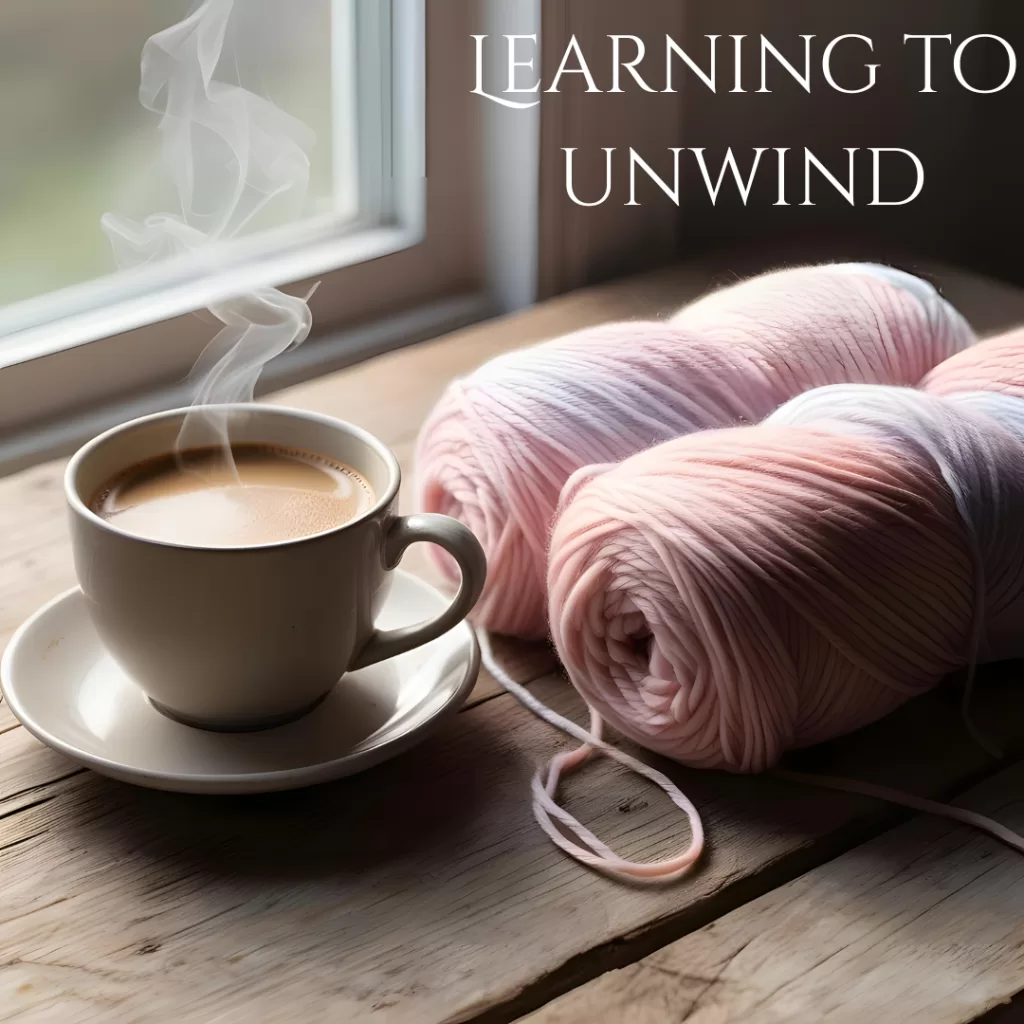
The Science Behind the Stitches
What happens in our brains when we crochet? Research has shown that repetitive, creative activities can trigger a relaxation response similar to meditation. This state—sometimes called “flow”—reduces stress hormones and increases feel-good neurotransmitters like serotonin and dopamine. The rhythmic nature of crochet essentially becomes a moving meditation, engaging our hands and focusing our minds in a way that interrupts the cycle of anxious thoughts.
Scientific studies state – The bilateral stimulation involved in crocheting—the back-and-forth, repetitive motion—bears similarities to EMDR (Eye Movement Desensitization and Reprocessing), a therapy used for processing traumatic memories and reducing emotional distress. While crochet isn’t a replacement for professional mental health treatment, these parallels might explain why many people find such profound relief through their craft.
Creating Your Anxiety Toolkit
Over the years, I’ve developed what I call my “crochet anxiety toolkit”—specific approaches to using crochet for anxiety and stress relief, when stress and anxiety levels rise. Here’s how you can use crochet for anxiety and stress relief and create your own:
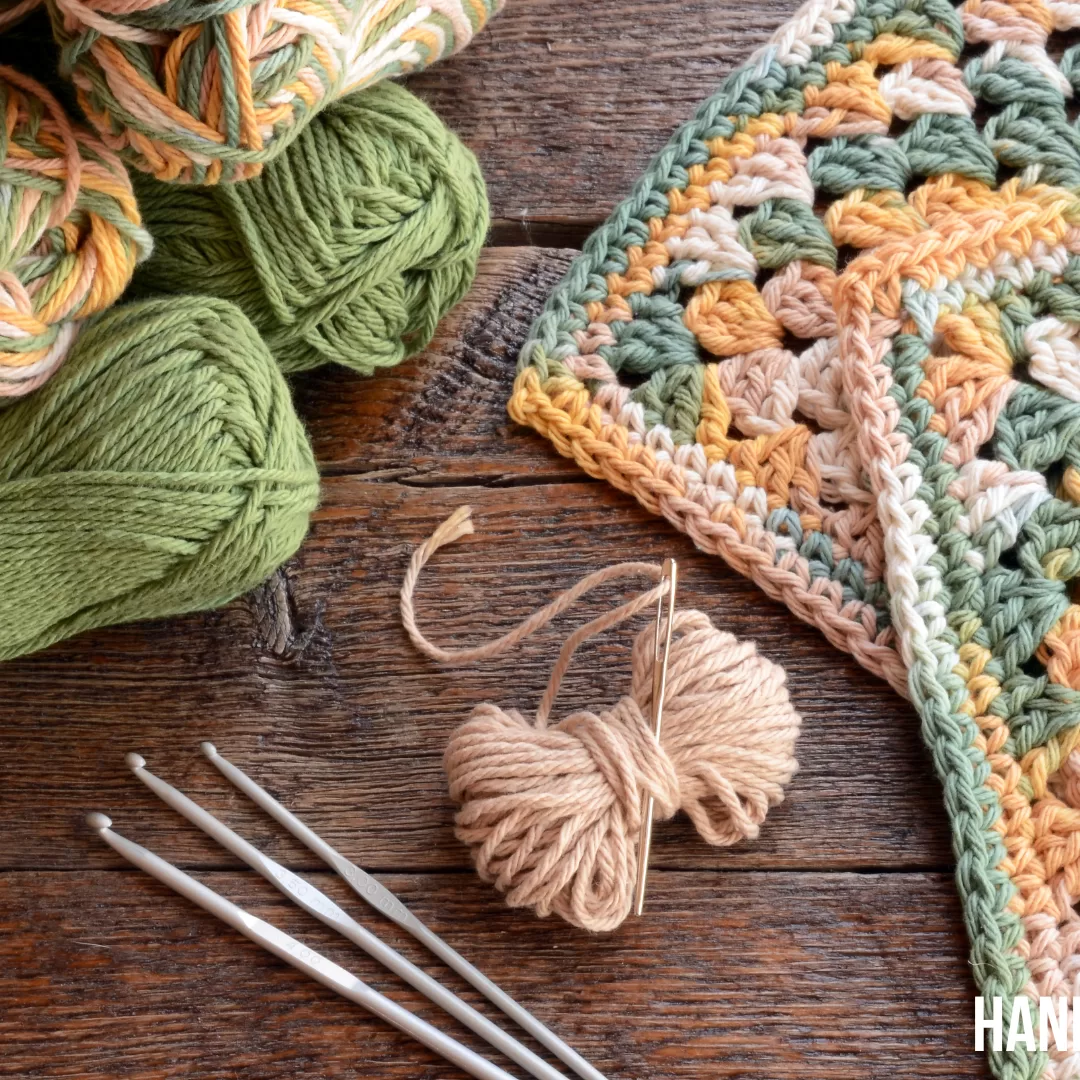
1. The 5-Minute Grounding Exercise
Keep a simple project—like a granny square or a basic dishcloth—readily accessible. When anxiety strikes, commit to just five minutes of crocheting. Focus intentionally on each element: the texture of the yarn between your fingers, the feeling of the yarn sliding through loops, the sight of the piece growing stitch by stitch. This multi-sensory engagement can help bring you back to the present moment, interrupting the spiral of anxious thoughts.
2. Breath-Synchronized Crocheting
Try coordinating your breathing with your stitches—perhaps inhaling as you insert your hook, exhaling as you pull through. This conscious connection between breath and movement deepens the meditative quality of crochet and enhances its calming effects. I’ve found this particularly helpful during high-stress periods or before situations that trigger anxiety.
3. Progressive Projects for Processing
Sometimes anxiety stems from feeling overwhelmed by circumstances beyond our control. Working through a larger project—one with clear steps that build on each other—can restore a sense of accomplishment and progress. Watching a complex pattern emerge from simple, repeated actions reminds us that small, consistent efforts accumulate into meaningful outcomes.
Choosing the Right Project for Your Mental State
Different types of crochet projects suit different emotional needs. I’ve learned to match my projects to my mental state:
For Acute Anxiety:
Simple, repetitive patterns that require minimal concentration allow your nervous system to calm while keeping your hands busy. Think basic stitches in straight rows: a simple scarf, washcloth, or blanket worked in single or double crochet. Projects using chunky yarn and larger hooks can also provide more immediate visual feedback, which can be reassuring when you’re feeling overwhelmed.
For Restless Energy:
When anxiety manifests as restlessness or an inability to settle, more complex patterns can help channel that energy productively. Try projects with colour changes, texture variations, or stitch combinations that require counting and concentration, like granny squares, textured beanies, or simple amigurumi.
For Persistent Worry:
Projects with a meditative quality—like mandalas, circular motifs, or tension-focused projects like market bags—can help interrupt negative thoughts and bring attention back to the present moment. The symbolic nature of creating something beautiful from a single strand can also provide perspective on how life’s complexities can be addressed one step at a time.
Building a Supportive Practice
Transforming crochet from a casual hobby into a deliberate practice for mental wellbeing involves creating supportive habits. Try some of these practices to use Crochet for anxiety and stress relief:
Create a Calm Corner
Designate a specific, comfortable space for your crochet practice. Keep your current project, favorite hooks, and a selection of yarns easily accessible. Add elements that enhance the sensory experience: a comfortable chair, good lighting, perhaps a scented candle or a cup of tea. This space becomes a visual reminder to pause and engage in self-care.
Practice Mindful Crafting
While crochet naturally lends itself to mindfulness, intentionally approaching it as a mindful practice deepens its benefits. Begin each session with a few deep breaths. Notice the weight and texture of the project in your hands. Acknowledge any thoughts that arise without judgment, gently returning your focus to the work of your hands when your mind wanders.
Join a Community
The social aspect of crafting can provide additional support for anxiety management. Whether online or in person, crochet communities offer a sense of belonging, shared purpose, and the opportunity to express feelings through a common language of craft. Many people find it easier to open up about personal struggles while their hands are busy creating.
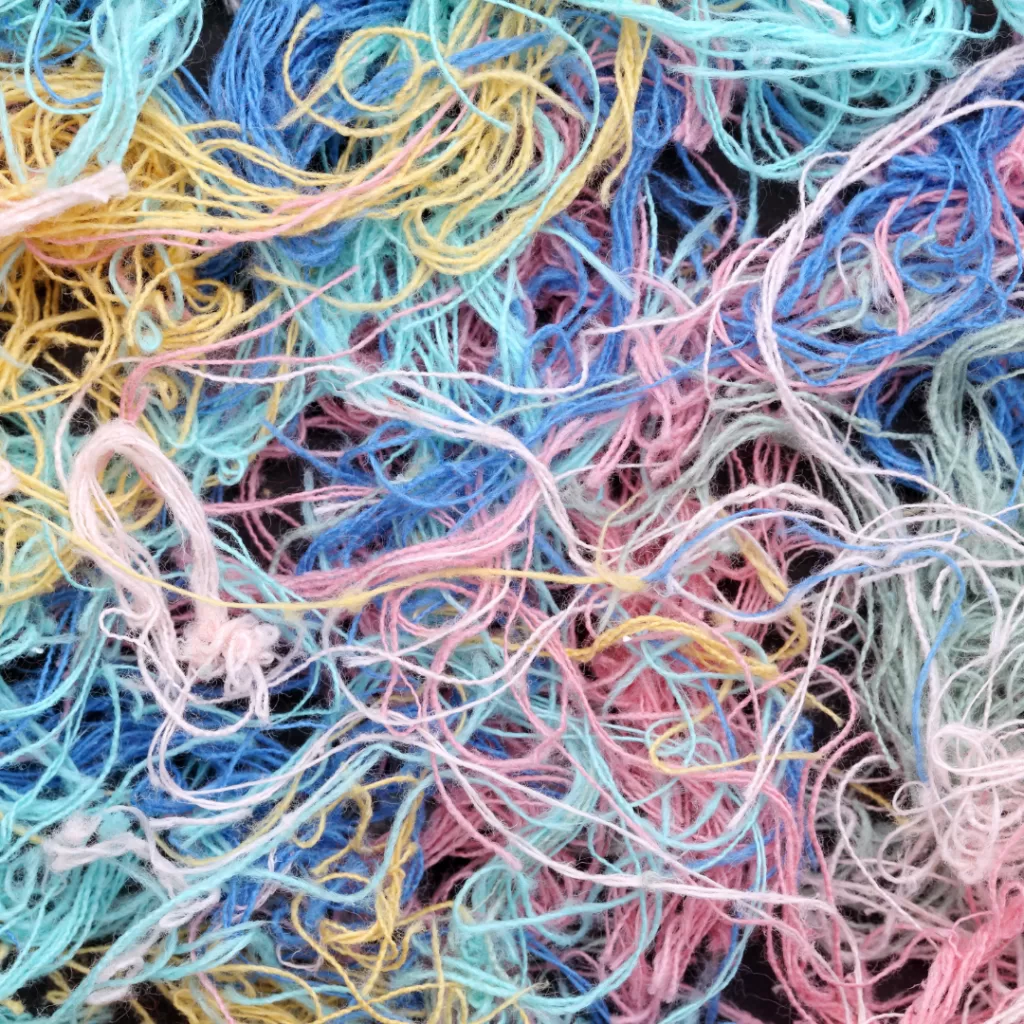
When the Yarn Gets Tangled: Crochet and Perfectionism
For those of us prone to perfectionism or self-criticism, crochet can sometimes become another arena for these tendencies to emerge. If you find yourself becoming frustrated with mistakes or comparing your work to others, remember that this is an opportunity to practice self-compassion as well as just have fun and live in the “crocheting moment”
Remember, each time you use crochet for anxiety and stress relief, you are creating “beautiful mistakes”. I can often find those times where I thought I had made a mistake or just could not get the right texture or stitch for my design – Those errors led to an unexpected design element or taught me something new. This reframes the experience from failure to growth and reminds me that imperfection is not only acceptable but often the source of unique beauty and learning. Go easy on yourself!
Beyond Personal Practice: Creating for Connection
One of the most profound ways crochet has helped my anxiety is through creating for others. Making items as gifts or for charity infuses the meditative practice with purpose and connects us to something larger than our individual worries. The act of giving creates a positive feedback loop of wellbeing: the calming creation process benefits the maker, while the final product brings joy to the recipient.
Consider keeping a “comfort project” in progress—an item specifically intended to bring comfort to someone in need. Working on such a project during anxious moments transforms the energy of worry into an expression of care and connection.
You could even use CHUNKY and HEAVY yarn to make a weighted blanket, which has been proven to give comfort and relief from anxiety!
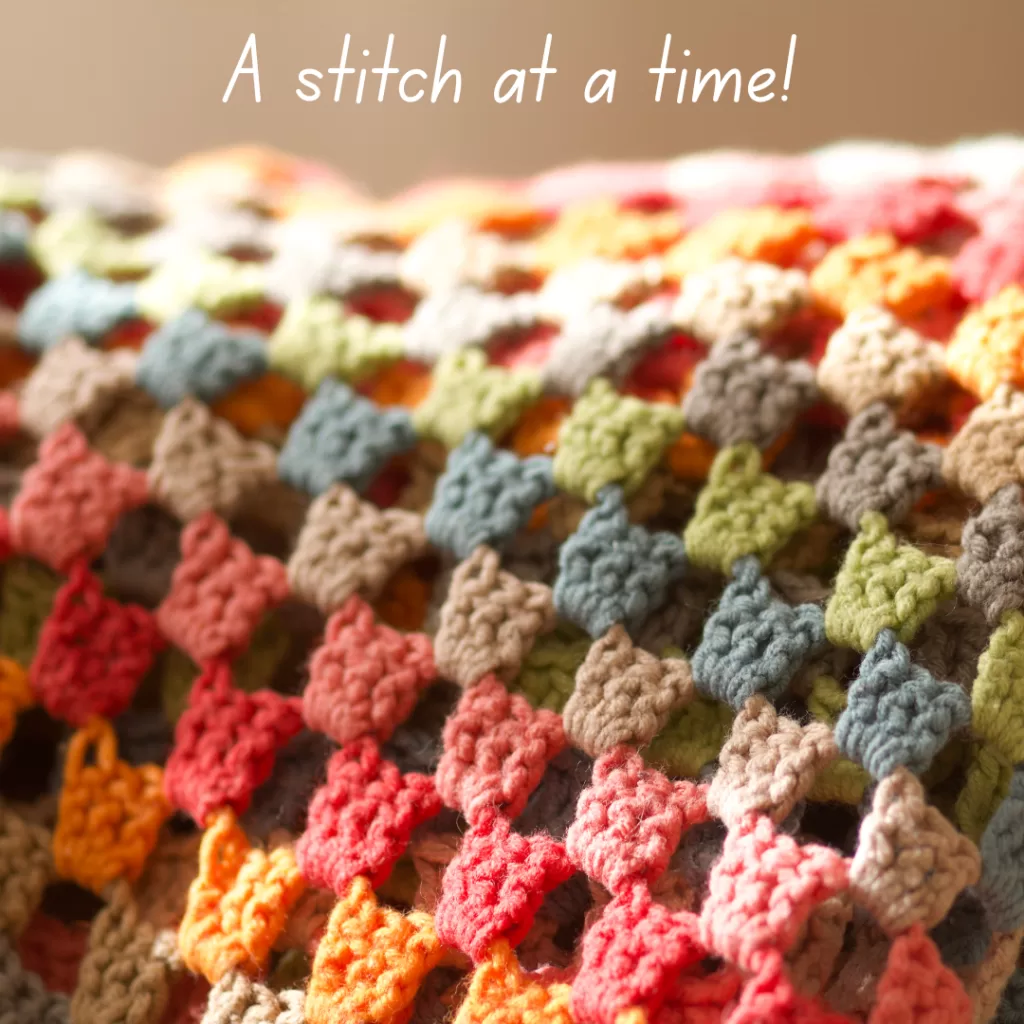
Take it a Stitch at a Time
In my journey with anxiety, crochet has taught me perhaps the most important lesson of all: progress comes one stitch at a time. We can’t create an entire blanket in a moment, just as we can’t solve all of life’s challenges at once. But with patience, persistence, and a willingness to work with what’s in our hands right now, something beautiful and functional emerges.
Whether you’re a seasoned crocheter or just beginning to explore this craft, I encourage you to approach it not just as a way to create beautiful objects, but as a practice that creates space for peace, presence, and self-compassion in your life. Pick up that hook, feel the yarn between your fingers, and remember: with each stitch, you’re not just making something—you’re remaking moments of your life into something more manageable, more mindful, and more your own.
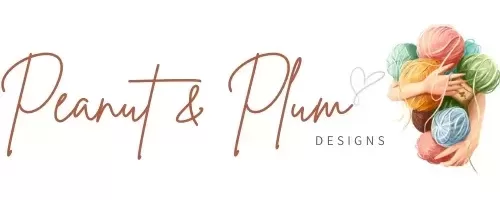
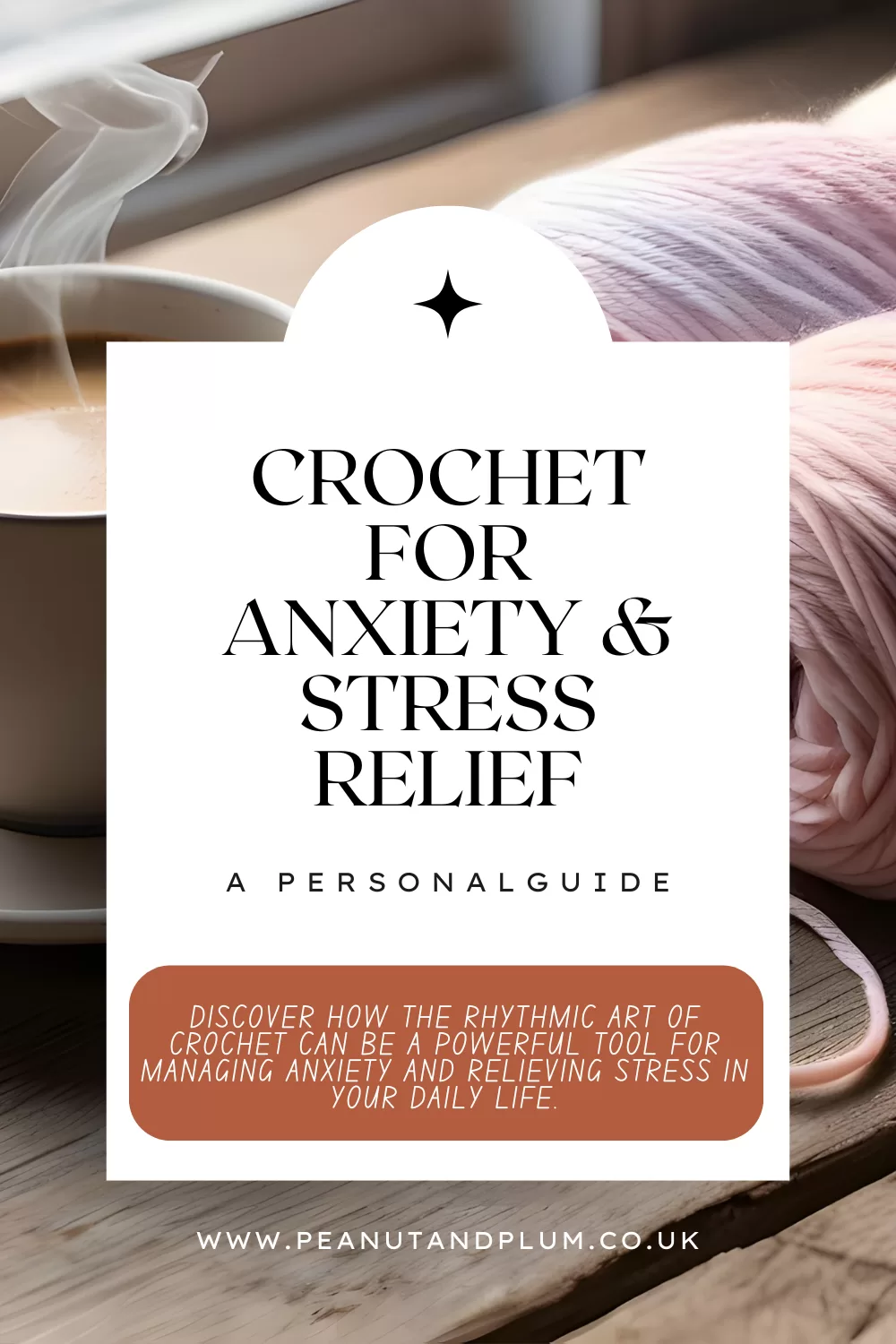

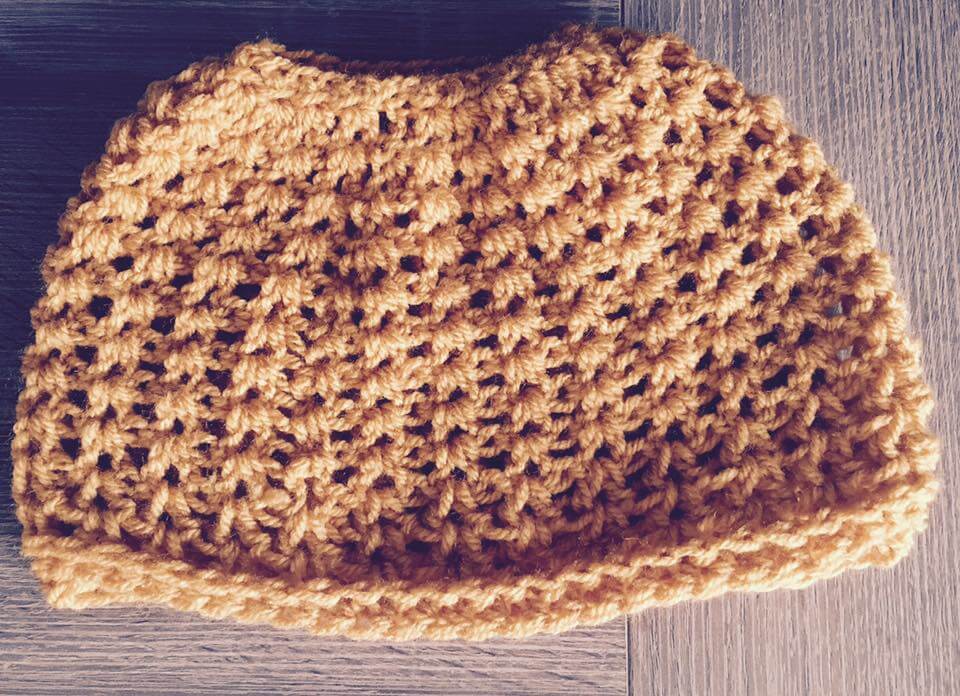
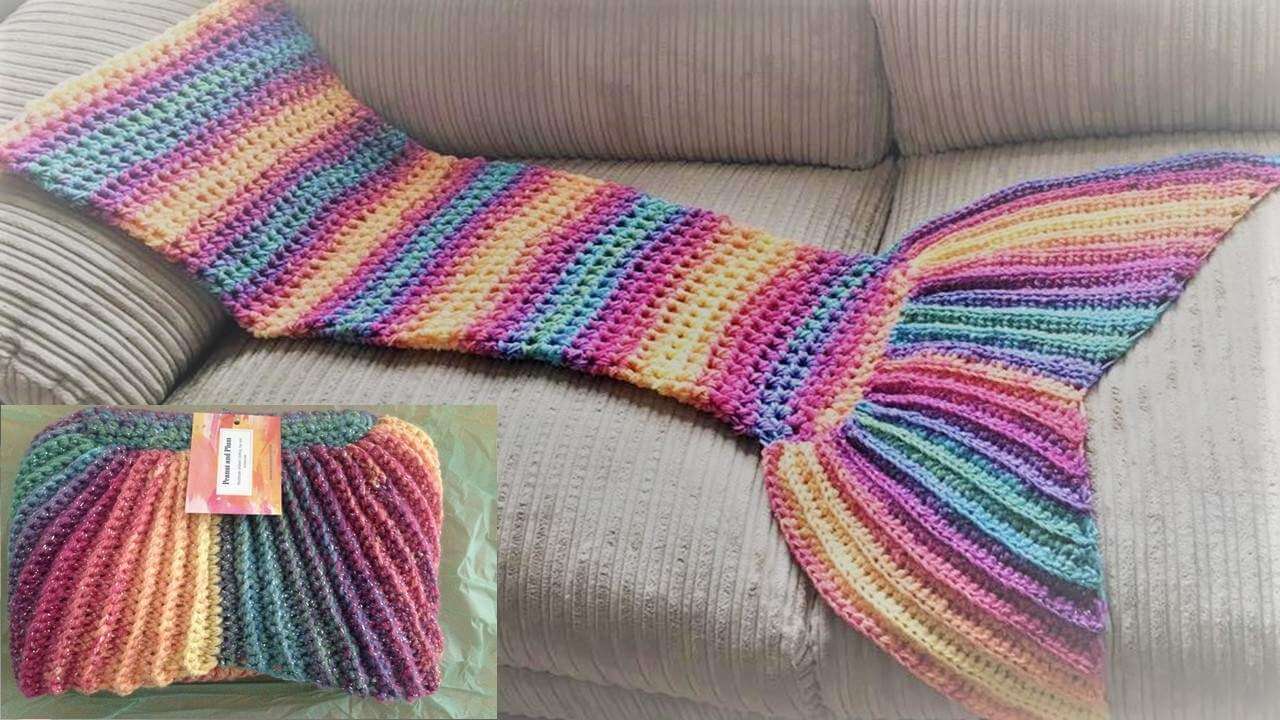
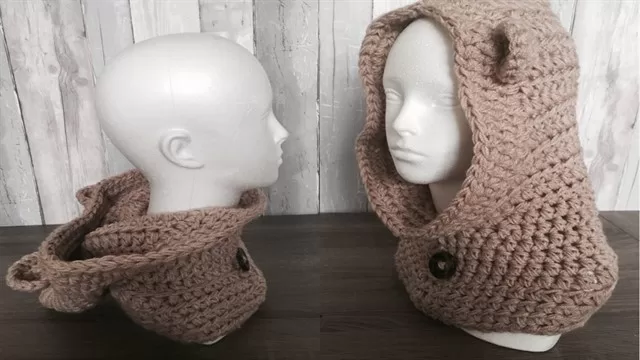


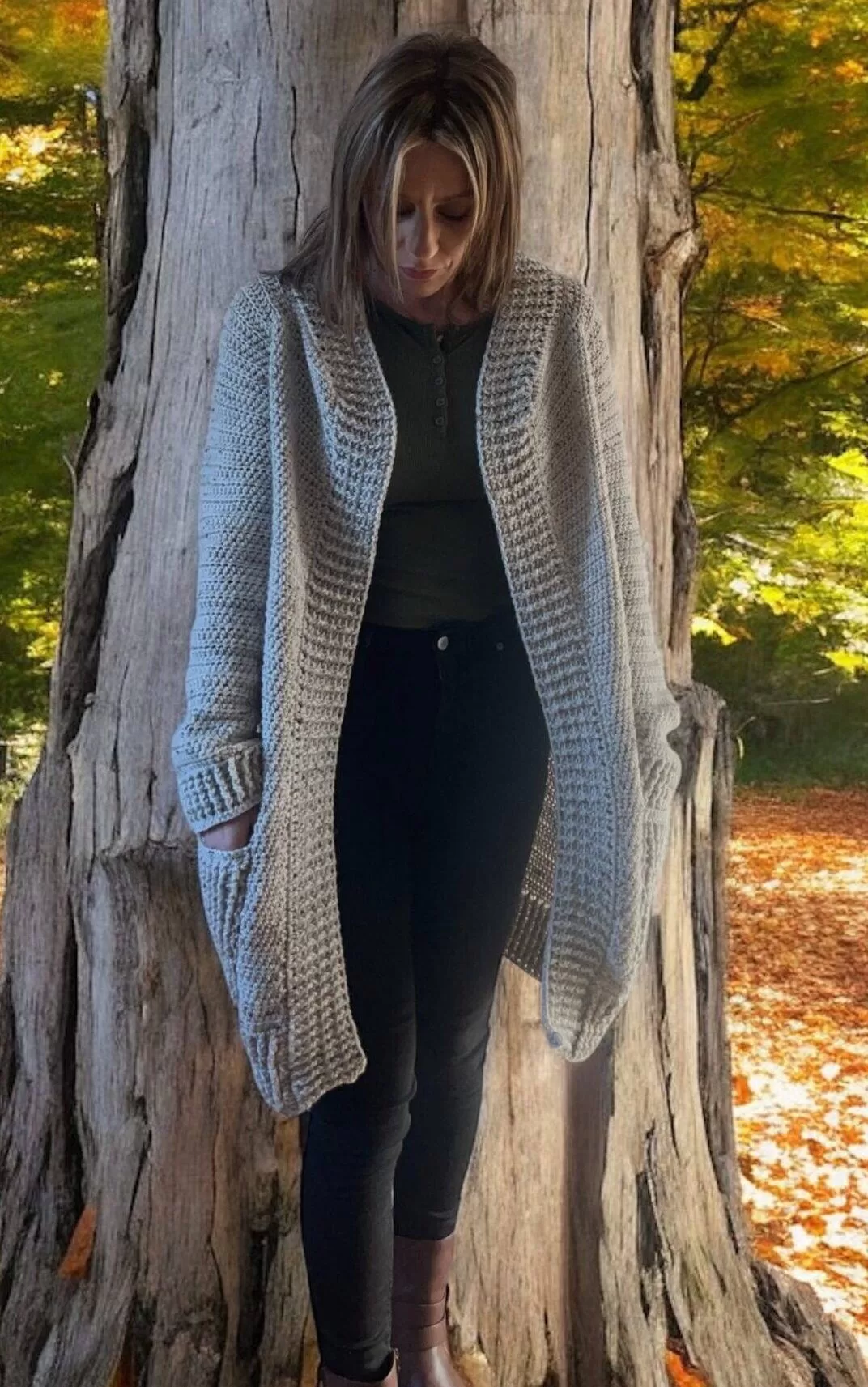
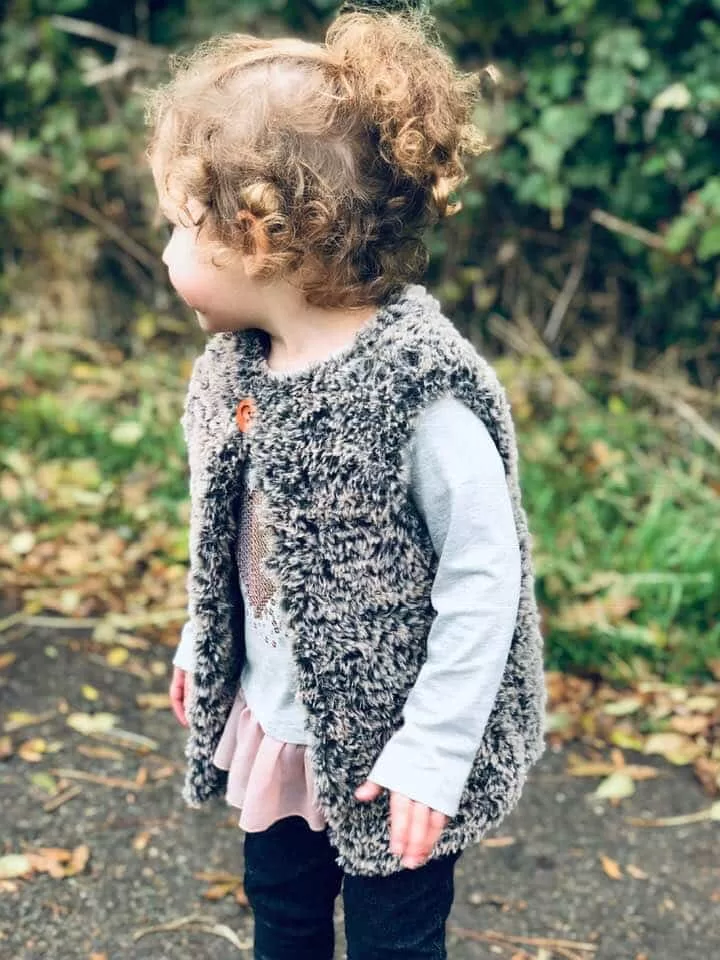

I have said this so many times. Crochet really helps me de-stress!